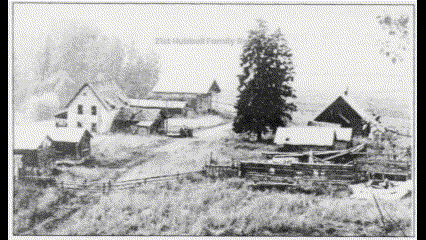DNA-Introduction
For the genealogist, there are three different types of DNA tests that can be performed. The type of ancestral information one is seeking will determine which test to take.
Y-DNA: Males only:
Currently, the Society hosts a Y-DNA surname project. The Y Chromosome DNA (Y-DNA) test, screens only for mutations on the Y chromosome. Only men possess a Y chromosome, passing it down from father to son, so this is a test for men only. The Y chromosome is especially favorable for genetic testing because mutations on the Y chromosome are stable and the chromosome does not undergo recombination during meiosis like the other 22 pairs of chromosomes.
What do we hope to learn from a Y-DNA test? The paper trail can be obscure or non-existent regarding questions about our heritage; DNA testing may prove helpful in resolving them. There are at least three areas of inquiry that the Society is investigating.
- The first goal of the Y-DNA project, begun in 2005, is to help identify individuals who are descended from our common ancestor, Richard Hubball (~1624-1699) of Ribbesford Parish, England and the New Haven Colony. Most, but not all, American Hubbell / Hubble’s are descended from Richard.
- The second goal of the project is to identify the earliest origins of the Hubball-Hubbold-Hubaud name and our earliest ancestors. Although Richard and his family came from Rock and Ribbesford Parishes in Worcestershire, England (16th century), we have identified at least two areas in England where we suspect the Hubball name might have originated based on historical documents. The two possibilities are Hubbal Grange in Tong Parish, Staffordshire (ca. 13th century) and Ipsley, Warwickshire the ancestral home of the Huband family (ca. 12th century).
- The third goal is to identify our deep-root heritage. Are we descended from the Nordic Vikings, the French Gaul’s or did we migrate directly from the Spanish Pyrenees? What was our migration route from the Spanish Pyrenees to England? And finally, when during the last 3300 years, did we arrived in England?
m-DNA: Females only:
The mitochondrial DNA (m-DNA) test, screens for mutations of the DNA located in the mitochondria and not the nucleus. Because only women pass on the mitochondria, with its DNA, from mother to daughter through the egg, this test screens only for mutations in women. At this time the Society does not have a formal m-DNA program. A few Hubbell daughters have been tested and their results are included in our online database at Family Tree DNA (FTDNA) [familytreedna.com]. Registration required.
at-DNA: Male and Females:
The autosomal DNA (at-DNA) test, screens for mutations on 45 of the 46 chromosomes. This test does not screen for mutations on the sex X chromosome that a female inherits from her father. Nor does it test the Y chromosome that a male inherits from his father. Testing for SNPs on 45 chromosomes would appear to be an advantage over the other tests, however there are limitations. During the production of an egg or sperm, large segments of DNA are exchanged between 22 of the paired chromosomes in a process called recombination. Because of this mixing of the DNA, during meiosis, the autosomal test can only trace ancestors back five to seven generations or approximately 250 years. As with m-DNA, the Society does not have a formal at-DNA project but a number of individuals have been tested and their results are included in our online database at FTDNA.
Click here for additional information about at-DNA
Testing
Individuals wishing to participate in the Hubbell Surname Project may join the Project and have a Y-DNA test performed through FTDNA (familytreedna.com). Click on the link below to join the Hubbell Surname Project and, if needed, to request testing.
https://www.familytreedna.com/project-join-request.aspx?group=Hubbell&projecttype=S.
If you have not been tested, and wish to do so, click on the “DNA TESTS” link at the top of the FTDNA webpage (using the above link). Next click on the Y-DNA link. Next, scroll to the bottom of the page. Presently, there are 3 Y-DNA testing options (Y-37, Y-111 and Big Y-700). The most useful test is the Y-700 test. Although more expensive, it provides the most comprehensive testing and thus the most useful information.
After you receive your test results, be sure to join the Hubbell Surname project at FTDNA. By doing this, the Society will be able to view your results and compare them with our database of other Hubbell / Hubbles that have taken the test. This analysis will provide a confirmation of your Hubbell / Hubble relatedness. Also, after you send in your sample for testing, send the Society an email (dna@hubbell.org) and let us know that you are participating.
See the Section, at-DNA Test: Information, for instructions to have an at-DNA test performed.

